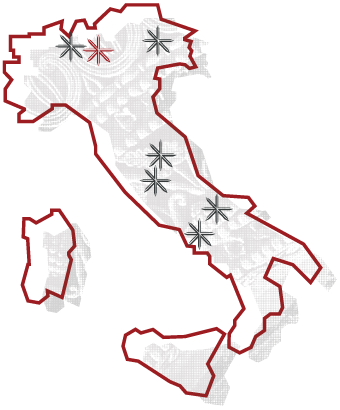National Archeological Museum
A treasure chest of Lombard history
With its strong ties to the surrounding area, the National Archaeological Museum of Cividale del Friuli (MAN) has an important role in the field of conservation and enhancement of the cultural heritage that throws light on the Lombard people.
The history of the museum begins with the Count of Valsassina Michele della Torre (Michel, Graf von Thurn und Valsassina), who in the early 19th century, thanks to his passion for romantic medieval history, received funding from Habsburg emperor Francesco I to search for all the remains left by the Lombard people.
The National Archaeological Museum is housed in the Palazzo dei Provveditori Veneti, built in the late 16th century and designed by Andrea Palladio. In the basement the remains of the Patriarch’s Palace (which was razed to the ground for the construction of today’s palazzo) are preserved; this extensive group of buildings once occupied the entire block of Piazza del Duomo and was linked to the adjacent church of Santa Maria Assunta. The museum is closely linked to the surrounding territory and the UNESCO site thanks, with a splendid Lombard collection exhibited in the first floor piano nobile, including numerous objects from burial grounds in Cividale and Friuli.
The museum’s role
The intention of the emperor and count was to create a point of reference for scholars who studied antiquities, and also a place where local inhabitants could discover their roots and origins. Thus in 1817 the Museum of Cividale del Friuli was officially inaugurated; later, in the second half of the 19th century, it received the donation of a priceless patrimony of documentary sources.


Collections
Today, visitors may compare the evocative sculptural furnishings from the remains of Late Antique and Early Medieval buildings, refined decorative mosaics from Roman town houses, as well as of course the abundant collection of Lombard period finds. The section dedicated to Lombard culture is housed in the rooms of the piano nobile: weapons and jewellery, coins and tools from burial grounds in Cividale and Friuli are on display, a precious legacy of the Lombard people’s funerary rituals.
Patriarch’s Palace
The building, located next to the church of Santa Maria and with walls built of large river pebbles bound with mortar, was rectangular in plan and perhaps included a solarium on the first floor. Written sources describe it as a large mansion, with numerous rooms and a chapel dedicated to San Paolino di Aquileia, next to an open area, a garden (or viridarium) in which a well was located.
Of the original decoration remains a white mosaic floor with a geometric pattern formed by black tesserae.

Visit
Info e contatti
National Archaeological Museum
Piazza Duomo, 13, 33043 Cividale del Friuli UD
Phone 0432 700700
Mail. museoarcheocividale@beniculturali.it
Website





























